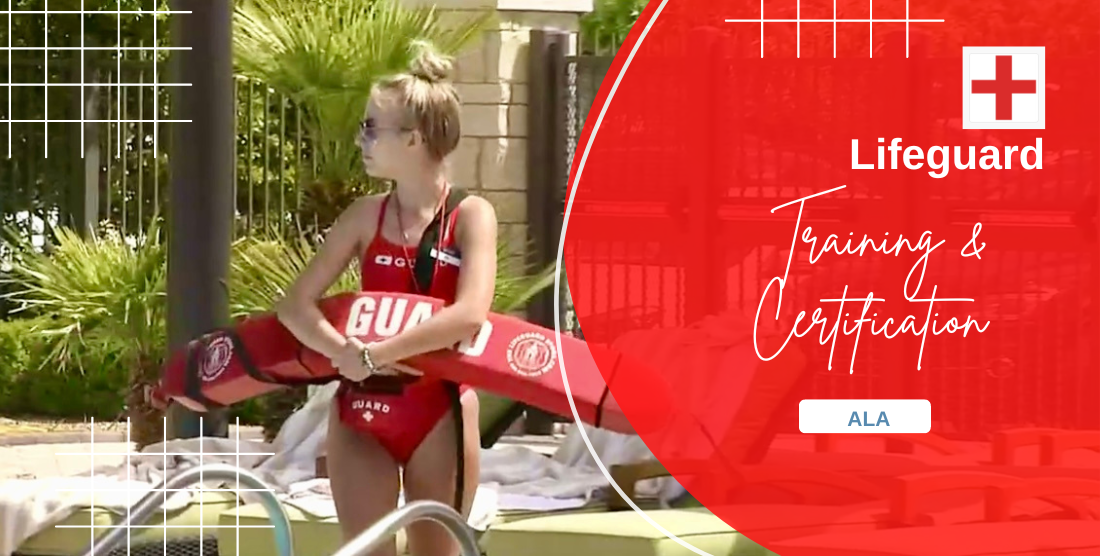
Lifeguards are responsible for the safety and well-being of people at swimming pools, water parks, and beaches around the world. Some people take this job as an extracurricular activity while others make it their career. If you want to become a lifeguard, you need to get proper lifeguard training and certification to save lives while on the job.
How to get Lifeguard certification
The American Lifeguard Association and the local Red Cross headquarters offer some Lifeguard certification courses. In the USA, some high schools offer swimming programs in fitness classes with a cardiopulmonary resuscitation certificate. If you want to become a lifeguard, choose your training based on where you want to be.
Study CPR and First Aid
It is important to complete first aid and cardiopulmonary resuscitation training in a lifeguard certification program. Before you enroll in a program, it is a good idea to study cardiopulmonary resuscitation procedures. If you have experience in advance, the program is an evaluation for you.
Training in CPR is very important and should be done on a regular basis. If your child is drowning or there is a medical emergency, do not hesitate to call 911. You can also call the child’s pediatrician. Do not go near the water if you have no prior knowledge.
A lifeguard certification program should include the following aspects:
-
Lifeguard training in CPR and first aid
-
Water safety. Prevention of drowning
-
First aid and CPR
-
Drowning prevention
-
Emergency response to medical emergencies
Awareness of warning signs
Lifeguards are aware of the signs that someone needs assistance long before an emergency occurs. Lifeguard certification from a reputed organization can make well-trained lifeguards choose to stay alert or take precautions. Poor swimmers who frequently put their heads in and out of the water, always have their hands on the edge of the pool, and move by pulling or holding on to the buoy are some of the most common aquatic warning signs.
The most common warning signs for swimmers are asking each other for help, frantically waving their arms, and those who are the quickest to show signs of panic. People often start to drown without showing any signs or difficulties. People shouldn't climb back up because they will go underwater.
Practice using lifeguard equipment
Lifeguards use a variety of tools to rescue swimmers. Life tubes and lifebuoys are used to keep people afloat. Lifeguards also have access to medical equipment used in hospitals. It's a B. The equipment used for cardiopulmonary defibrillation. They have spine boards that can be used to move people who may have injured the spine, as well as basic first aid kits that they can use. They use pocket masks and face shields. They are placed in the victim's mouth to stop the spread of diseases.
Learn about tides, water conditions and wildlife
If you plan to be a lifeguard on the beach, this is very important. One of the most dangerous situations for inexperienced swimmers is the surf currents. Even experienced Olympic swimmers pull swimmers away from shore at very high speeds. The easiest way to escape them is to swim parallel to the shore.
Waves that break right on the shore are a danger on the beaches. Waves can be very unpredictable and can cause serious neck and spine injuries when they break close to the shore. They are able to surprise even the most experienced beach swimmers. Swimming safety can be adversely affected by Red tide.
There are colonies of algae that produce a lot of toxins each year. Red tide is caused by toxins accumulating and creating it. It can be fatal to marine life and cause serious illnesses in humans. The sea has millions of different creatures, but some visit the coast and beaches more frequently than others. Jellyfish, sharks, crabs, and many other creatures swim and crawl along the shore.
Pass the certification exams
At the end of the Lifeguard certification training course, you will be tested on your knowledge of the written topics as well as your physical ability to carry out lifeguard work. They evaluate you in relation to monitoring the participants. The victim's evaluation, care for neck, spine and head injuries, and general swimming safety protocol is included.
Depending on where you take the exams, the physical tests differ. Some require you to swim 280m, stay in the water for 2 minutes, swim using different techniques, dive to a depth of 3-4m and hold your breath.
Also Read About: Lifeguard certification: Essential for Water Safety and Career Opportunities
Final words
Lifeguard certification is important because a lifeguard is responsible for the safety of the swimmers at the beach and pools. The American Lifeguard Association has been training lifeguards for more than 30 years.
If you would like to find a Lifeguard certification course near you, please don't hesitate to contact us.
 icons at the top right corner of the subsection.
icons at the top right corner of the subsection.